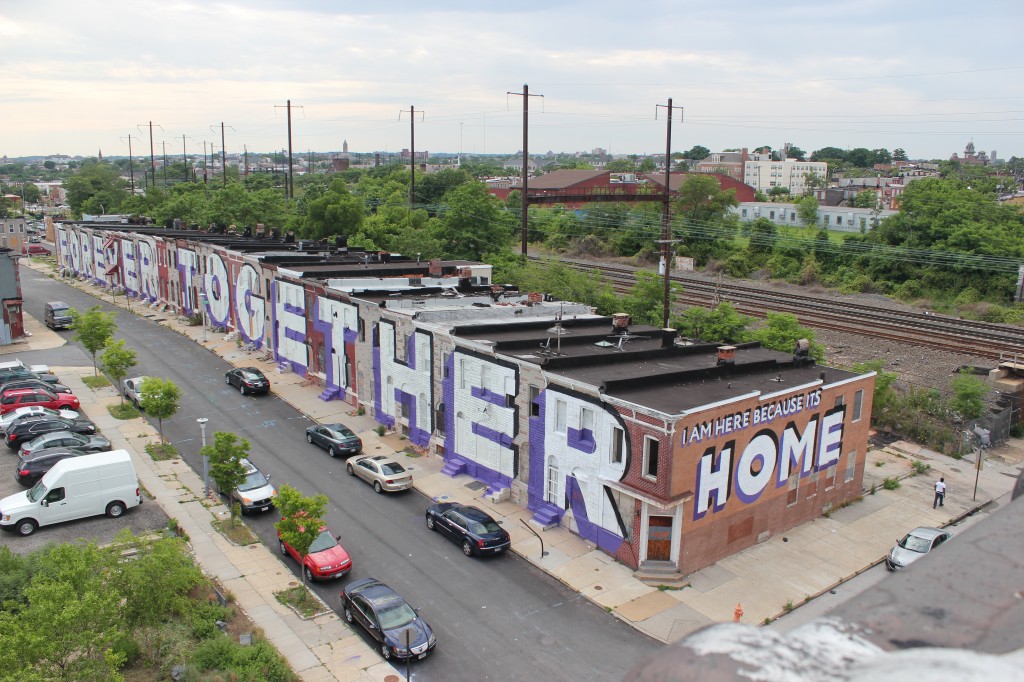There is nothing — truly, hardly a thing — that I love more than being surprised. Especially the type of unexpectedness that takes an outdated thought you’ve held for no good reason and simply rips it right out of you. Sort of like a Mortal Kombat move. One moment you had a preconceived idea about whatever it is, and BAM it vanished. Well, that happened to me moments after I arrived in Baltimore, or as they like to call it, Charm City. Fuckit, I was charmed.
My Baltimore started with the TV series The Wire –- and I suspect for many, that is where it regrettably ended. In some ways, one may call that show some of the best television of all time: a look at the narcotics scene in Baltimore through the eyes of dealers, users and law enforcers — characters you could hate-love and go on a ride along with. It sucked you in, and it broke you and then it rolled you out onto the street to bleed out. It was that brutal, and it was that good.
When you speak to locals and ask them whether they think The Wire (now celebrating 20 years since it aired) did damage to the reputation of the city, it’s a split verdict. John Waters, who lives in Baltimore, thinks it brought well-needed attention to his city. “It’s an incredibly well done show,” he says. “It’s not a lie that some neighborhoods are like that. But where I live, for instance, no crime was reported in the last quarter. Three blocks away, murders happen. So it all depends on where you live. Unfortunately location means life and death, as in America. But the The Wire brought attention to exactly that.”
Waters also adds that TV is made to be exciting: “People want to see the extremes of anything.”
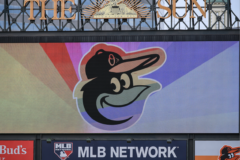
Also Read
Pride Crowds
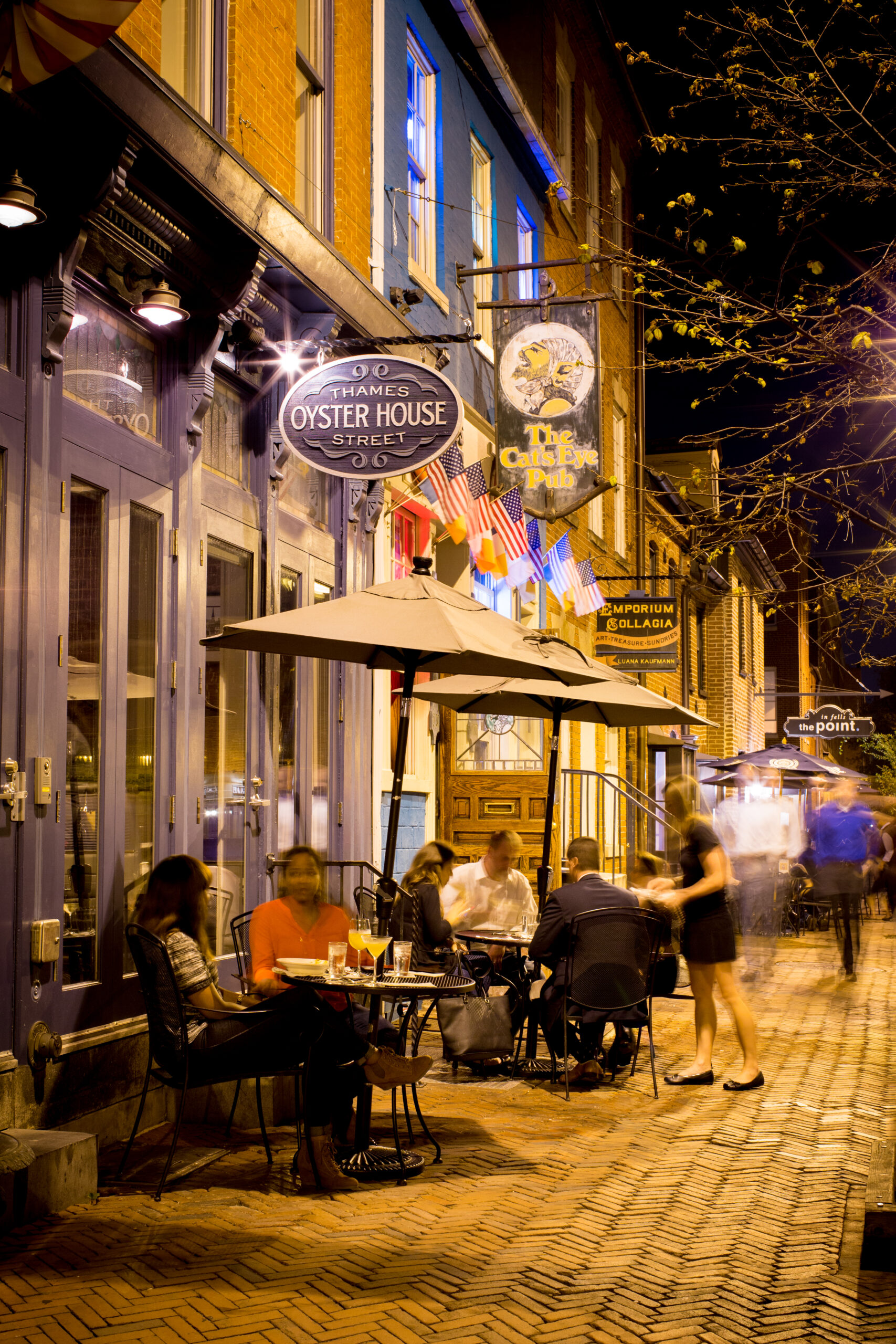
In a recent New York Times profile, Ed Burns, a retired Baltimore homicide detective and public-school teacher, who co-created the show, said: “I’m sorry [Baltimore] was labeled the city of The Wire, because we could’ve taken that show into any city, in exactly the same way. Akron, Ohio would have suddenly become the ‘Wire’ city. So it’s a shame that it was pushed onto this little town.”
Told you.
David Simon and George Pelecanos, the Executive Producers of The Wire, have now done this new limited series, We Own This City (WOTC), based on journalist Justin Fenton’s non-fiction book of the same name. It’s a not-quite-sequel, almost counter-statement to the one that came before. Here we’re watching a Gun Trace Task Force (an arm of the Baltimore Police Department) that is secretly planting evidence, obviously some insane discriminatory policing, and skimming cash. But what we’re really watching is a new over-revealed America — contracting, expanding and hard core dividing.
We’re in “No Justice, No Peace” territory — a slogan from the Black Lives Matter movement that is all over Baltimore, and, rightfully, the rest of the country. We are also now the land of Freddie Gray, who suffered a fatal spinal cord injury when he was tossed around the back of a Baltimore police van. But America is also the place of police corruption (allowing it to exist and even encouraging it, as both shows emphasize) and Blue Lives Matter, of racist hate crimes like the recent Buffalo shooting, and even a place where insurgents storm the Capitol…
So, naturally, it’s easy to become cynical. I certainly feel those days. When it’s easier to not do the right thing, and when America encourages that, we’re in dire straits. And Baltimore is grappling with some of these hard-boiled realities in front our eyes. That’s part of the shield and the sword of Charm City.
In many parts of America, health care has bottomed out and left people broke, insurance companies are now full on money grabbing scams and doctors are so scared they will get sued they’re struggling to keep to their Hippocratic Oath. The ones who need to protect you (from yourself, or the rising crime of the have-nots) have left you to fend for yourself, or are guzzling down a Q-ANON sick fantasy.
When the news cycle shows you this on television 24-7, and even more intensely on social media, what do you believe? It’s all feeling so beyond repair, it’s so far gone that nothing can bring us back from the brink of disaster.
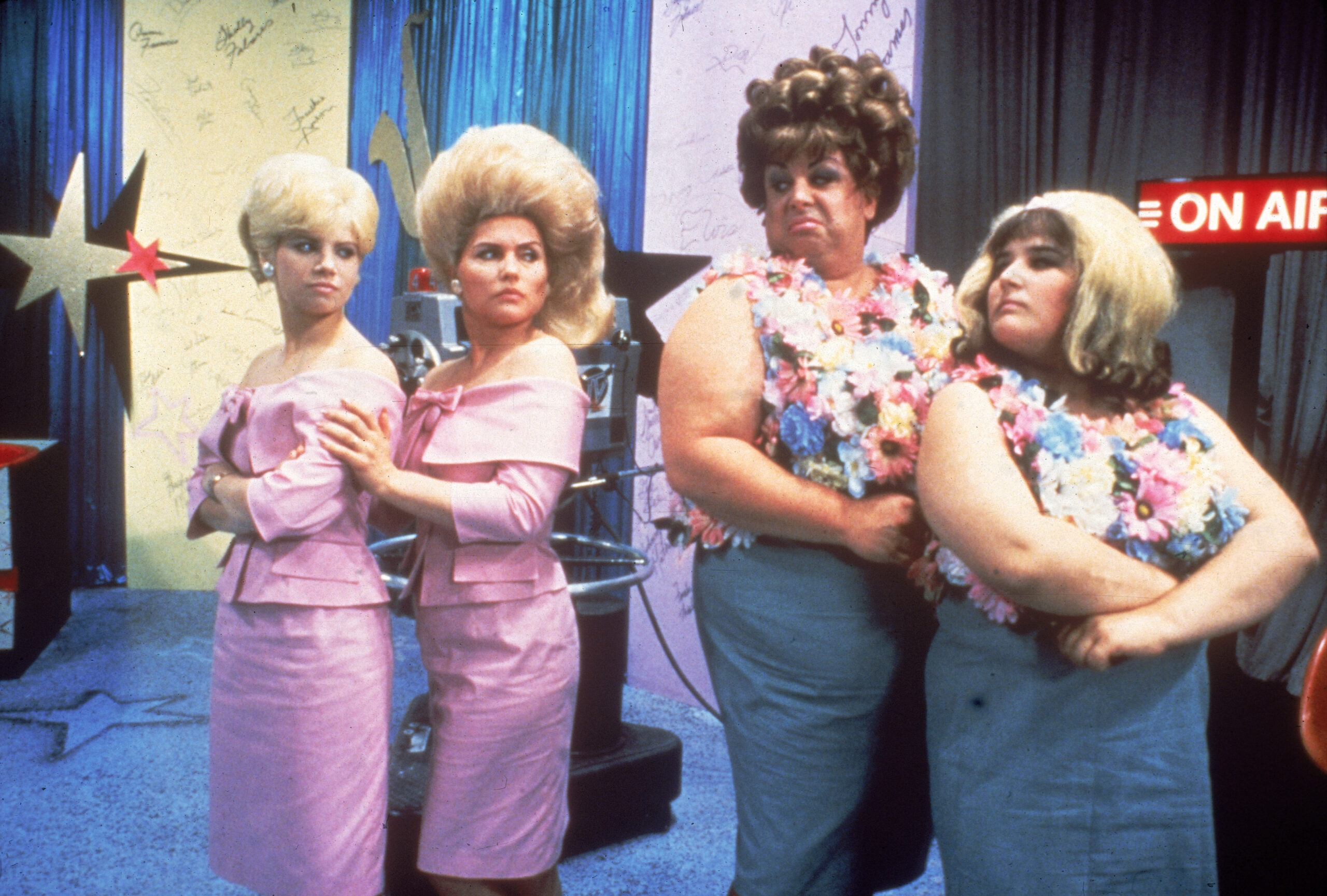
Baltimore doesn’t sugar coat this shit. Every day, unlike the lies of other parts of the country, the city grapples with all of it. Extremists like to shout and blame “big city life,” and love to point the finger at Baltimore. But as someone who travels all over the country, most of the year in a plane, train, car, or boat, I can tell you that the problems are everywhere in big and small ways. Baltimore is no exception, it’s just not in denial.
Even though Baltimore emerged as a port city in the 1800s trading in slaves and tobacco, it became a haven for “Free Blacks” and also after the “Jew Bill” of 1826 a place where Jews had the right to hold public office in the state of Maryland. The combination of these two things meant these two groupings of people were in this mess of America, together. And formed a bond, living side by side. And as historian and chef Michael W. Twitty says in his new book “Koshersoul”, “Jewish kids noshed on coddies (potato cakes) and slurped snowballs and loved hotly spiced crab, like any Baltimorean.”
Twitty happens to also be black, Jewish and gay, and as he says “Baltimore was also it’s own special thing – neither the shifting neighborhood policies of New York nor the performance of Deep South racial hierarchies of Atlanta.”
And speaking of John Waters, his comedy about racial integration in Baltimore in the 60s, Hairspray, dealt the cards. The city wasn’t shying away from the issues of the day, the city was working their shit out. Of course Waters uses comedy, and his genius comedy at that, to bring light to these gigantic issues, and that’s why the movie rattled so many cages. If you show the bigots what they look like using humor, it’s so hard for them to hide behind all their lies, hypocrisies and bullshit.
It also showed and parodied, “Hon culture,” where local Baltimorean working class women dress in bright, printed dresses, with glasses and beehive hairdos. Which, to this day, is such a part of the city’s culture, with “HonFest” and more. Just one more authenticity from, as they like to say, “Baldamore.” Instead of hipster nonsense, feeding us “normcore” same as everywhere else, here it embraces its own thing, has its own vernacular and dishes it right up in your face, “‘k hon!”
Unique Mical Robinson, a queer writer and proud Baltimore native (growing up in a housing project which the first couple of seasons of “The Wire” is based on), calls Baltimore “one of last non-pretentious cities left in the country”. And that raw energy is palpable everywhere. “The Baltimore art scene nurtured me. Because the city has a deep preservation of its culture, Baltimoreans just don’t leave, so all that magical energy stays here. It’s rooted in the working class, mixed with an incredible underground culture, dating back to Billie Holiday and the city’s jazz energy.”
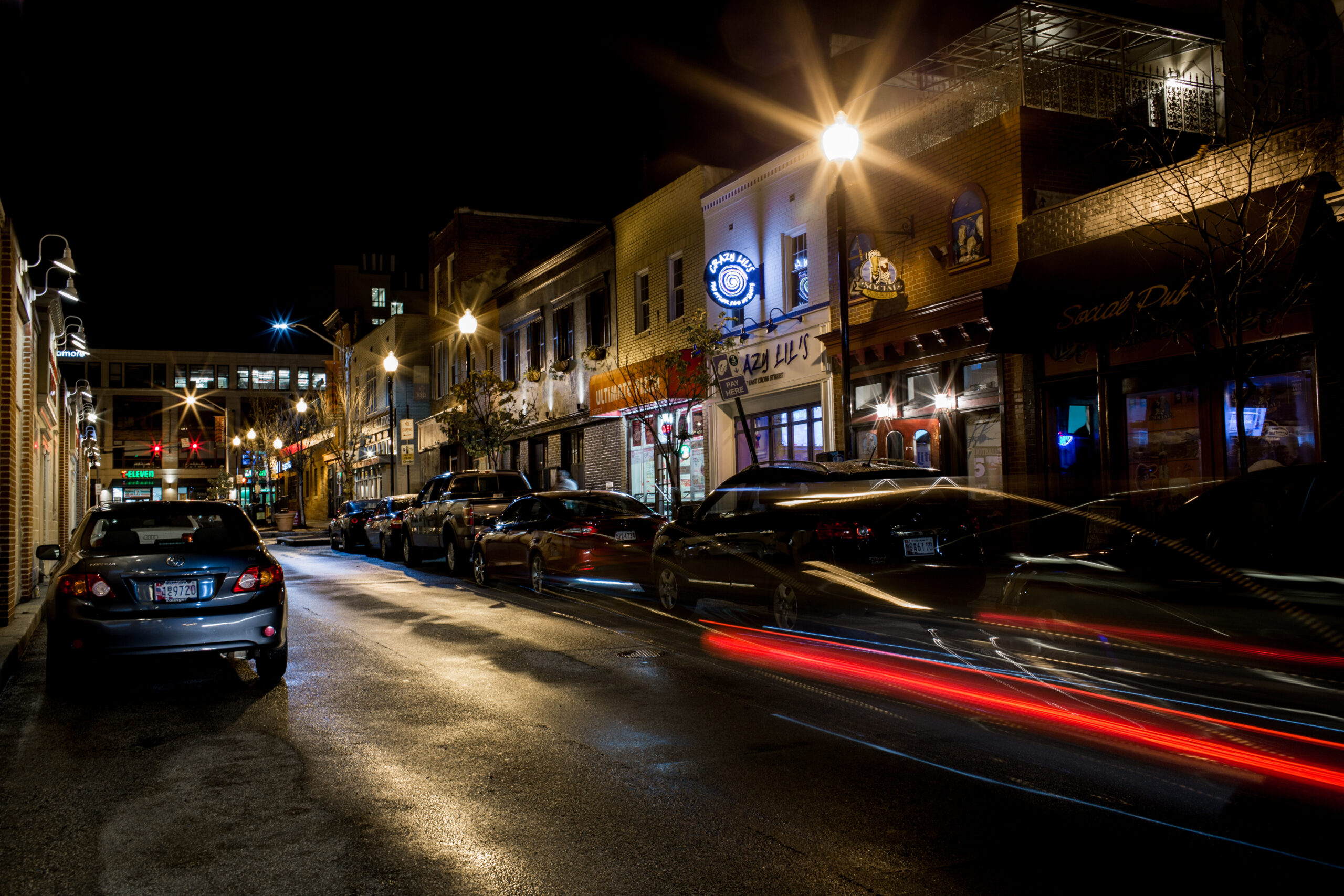
So, let’s get back to how I was surprised. I was fed all this Baltimore bane, and then I arrived, and against the advice of people who have never been to Baltimore, walked the whole city. I went from a coffee shop, to a barber, to a museum. I walked neighborhood to neighborhood, meeting locals. I supported small businesses (like fashion brand Different Regard), I chatted to baristas, to laundromat owners playing cards outside their shops, I sat at dive bars meeting young people, I did it all. I walked it from top to bottom, from Seaport to the suburbs. I marveled at the incredible architecture that nobody tells you about — Neo-Baroque, Greek Revival, Georgian. If you squint and smile, it’s a village-y New York meets Washington DC. But the mural by Steve Powers, “I am here because it’s home”, is something I cannot forget.
Baltimoreans live in that dichotomy, a place filled with problems but a place that is also beautiful. And to them, it’s home, and they’re not leaving for anything. And why the fuck should they? Whilst in town I heard the chronicles, the history about lead paint that poisoned children in downtown Baltimore as they licked the sweet tasting walls. I heard about the white flight, where caucasian families fled downtown due to “crime.” I heard about the mismanagement of government funds and taxes, and many convicted officials. I heard about the waterfront tourism collapsing as COVID hit. And guess what, locals talk about it openly. You think all these problems are not happening — in similar and equal ways — in every single other state, every single other city? If you think you’re community is immune, you’re asleep at the wheel.
“The city is 250 neighborhoods with intertwined, coexisting citizens of rich and not so rich pockets –- and that’s the magic,” says Juan Webster, Sagamore Pendry’s General Manager & Corporate Director of Social Impact. “What Baltimore has done is share its scars, own their story — it’s genuine and authentic.”
And that’s the sense I have here, instead of the city just promoting the inner harbor (as they did years before) now it’s bold enough to be transparent about the real city and inviting people over to come experience it for themselves. “You know what else, it’s a city celebrating Black Excellence,” adds Webster. “Baltimore opens up a proper dialogue, not only about itself, but about the real America.”
After all it was the great Social Reformer, Frederick Douglass, who said: “Going to live at Baltimore laid the foundation, and opened the gateway, to all my subsequent prosperity.” And as Al Hutchinson, CEO and President of Visit Baltimore, will tell you: “our new narrative is telling our real story from an authentic point of view: showing the perspectives of diverse Baltimore.” And instead of just promoting those famous crabcakes (and the well-known waterfront), the tourism efforts are noticeable all over town as you watch some of the flourishes. I mean, I think instead of standing up in your terrible dull and biased ivory tower of judgment, you should come down to earth here in Baltimore. It’s certainly more fun, more fulfilling, and, fuckit, you may even learn something about yourself.

